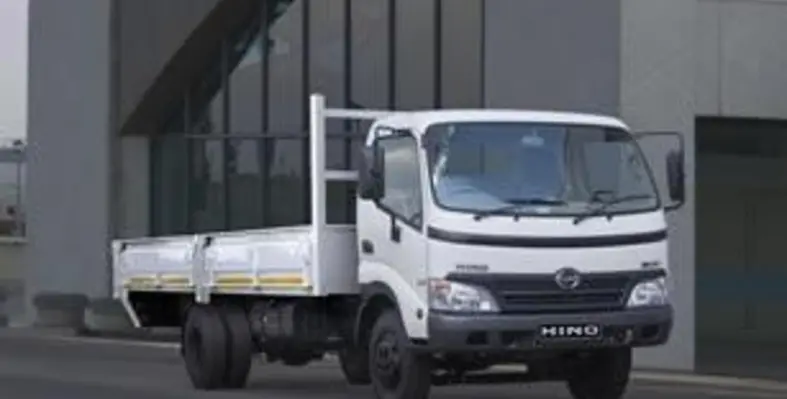Air conditioning is standard for all trucks in the Hino 300 Series in the 2010 model year.
This is an important upgrade in driver comfort that comes at the same time as a switch to engines that comply with Euro III emission regulations, which are more stringent than the Euro II specification level that are a mandatory requirement for trucks and buses in South Africa from 1 January 2010. Speakers and radio connections for an audio system are also now part of the standard specification, but it is up to the operator to fit a radio of his or her choice.
Production of the seven new 300 Series models started on 1 December at the Hino manufacturing plant in Durban. Importantly for operators in these tough economic times, there will be no price increase when the new models are launched.
“We have taken the opportunity of the switch to the new range of cleaner N04C engines for the entire Hino 300 Series line-up to relook all aspects of this popular truck’s specification, particularly where it affects driver comfort, which again impacts on safety and productivity,” explained the general manager of Hino, Casper Kruger.
“The air conditioning system fitted to our trucks uses the latest technology which minimises its impact on fuel consumption. In fact we believe that a driver operating in a cool environment in the hot South African summer will be in a better able to concentrate on efficient driving, which should translate into fuel saving and a heightened level of traffic awareness,” added the Hino chief executive.
Three versions of the base N04C 4-litre engine will be used, with varying outputs derived from the use of different turbochargers and the level of boost. Besides producing far fewer and less harmful exhaust emissions the latest engines offer major benefits in terms of an increase of up to 23 per cent in power and up to 27 per cent in torque compared to the Euro I specification engines they replace.The 611 variants in the 300 Series range kick off with the TR specification which has a power output of 81kW at 2 500r/min and maximum torque of 314N.m, while the TS version of the four-cylinder intercooled turbo-diesel engine fitted to the 714 and 814 derivatives delivers 100kW at 2,500r/min with 392N.m of torque. There is then a jump to 110kW of power at 3,000r/min for the TT version of the engine used in the 815 and 915 models. Torque is unchanged at 392N.m. In all cases maximum torque occurs at 1,600r/min.
The Euro III-compliant N04C TT power unit was introduced to the South African 815 and 915 models in the middle of 2008 and it has proved very reliable and been well accepted by the local operators, even when operating on fuel with 500 parts per million of sulphur rather than the preferred 50ppm fuel available in certain areas of the country.
Most of the models in the 300 Series range make use of the five-speed Hino M550 manual transmission, with gear and final drive ratios matched to the relevant engines and GVM of each specific model. The 815 and 915 are fitted with the six-speed MYY6S gearbox.
The higher differential ratios that can be used with the more powerful engines result in improved fuel consumption, overall vehicle efficiency and ultimately engine life, all of which result in a substantial improvement in operating costs.
The Hino 300 Series, which was previously known as the Toyota Dyna, continues to be South Africa’s medium truck of choice and has been the top seller in its category for the past 28 consecutive years. Total sales from launch in 1965 to the end of October 2009 now totals 82,371 units.
“We are very proud of the success enjoyed by the Dyna and its successor, the Hino 300 Series, and we will continue to adapt and upgrade our models to stay in the leading edge technologically, while providing ongoing peace of mind for the operators in terms our proven record for quality, durability and reliability,” concluded Casper Kruger.





